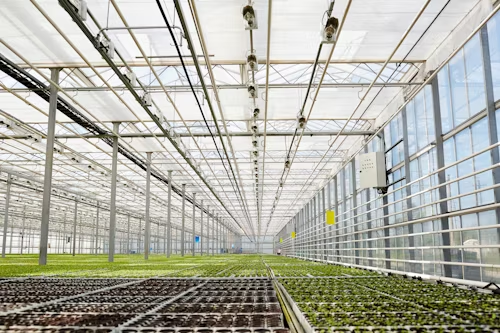Answers For [Other sources] - Agriculture and Environment
Answers and detail explain for [Other sources] - Agriculture and Environment
1.
Food
2.
fishing
3.
forestry
4.
destruction
5.
genetic
6.
Climate
7.
policy
8.
network
9.
cost-effective
10.
infrastructure
Explain
[Other sources] - Agriculture and Environment

0:00
0:00
Lecturer: Welcome to this lecture on agriculture and the environment. I hope it is enough to make some of you decide on a career in the field of agricultural science. 1As you all know, food is a basic human need, and producing enough of it is the single greatest challenge facing the modern world. Developing nations have rapidly expanding populations, so agriculture should be central to any development agenda for those countries. What's more, 75% of people in the developing world are dependent, directly or indirectly, on agriculture for their livelihood. And for many low-income countries, it's the most important sector of the economy, accounting for 50% of GDP, and sometimes it's the primary, if not only, source of foreign currency. 2Now, of course, when I talk about agriculture, I am using the term to encompass more than just growing food crops. Of course, livestock farming, fishing, 3and forestry are included. In order to combat wide-scale food shortages, agricultural research programs are underway in many areas. Using science is one way to increase productivity. But a word of warning: agriculture must also be sustainable. Let's look at approaches that are not sustainable. Firstly, overgrazing and intensive cropping are two ancient but destructive practices that lead to loss of soil fertility. 4Secondly, the modern idea of liberal application of chemical pesticides and herbicides has had disastrous consequences for the health of the land, ranging from the pollution of water sources to the destruction of wildlife. These practices have ignored the mechanisms that sustain ecological communities. Ignorance has led to the destruction of the very biodiversity that is essential for sustainable food production. 5However, introducing new agricultural techniques, especially things like genetic engineering, can be difficult because many people remain suspicious of the fact that plants have had their genetic material modified by scientists. Biotechnology has also led to the dubious practice of bioprospecting, or as some prefer to call it, biopiracy. Foreign multinational companies have been accused of illegally obtaining samples of indigenous plants of other countries in order to get their hands on genetic material to improve the quality or yield of their own crops. 6We must put aside the controversy surrounding the field of agricultural biotechnology in order to concentrate on the biggest threat to food production on this planet, which is, yes, climate change. The effects of global warming so far have been to shrink the food supply, thereby pushing up prices and making even the most basic necessities unaffordable. As I see it, the international community must address this and other challenges to agricultural production with urgency. 7Concrete scientific and technological achievements need to be presented for farmers to evaluate and learn to use, but, apart from that, governments need to address the complex issues of policy development if the world's hungry are to be fed. Environmental policies need to be put in place to protect ecosystems and correct soil degradation where possible. Countries cannot continue to exploit natural resources whilst ignoring the consequences. 8In fact, I'd like to see teams of agriculture and environment experts making up a global network, which would monitor the world's farming systems. Different farming systems should be studied not only with a view to analyzing the environmental effects but also the social and economic effects as well. 9The studies would be carried out with a view to stemming pollution and erosion and promoting safe, cost-effective practices that will guarantee a secure food supply in the future. 10Monitoring sites would need to be set up all across the world, and data collected in a systematic way. Of course, building the online infrastructure for such a project would cost millions of dollars, and there would be ongoing costs involved with the monitoring system, but the information gathered would go a long way towards solving the problem of feeding the masses and ensuring millions of people don't face a hungry future.
Questions 1-10
Write ONE WORD ONLY in each gap.
‘Agriculture’ means:
|
![[Forecast Q2-2025] - Biology lecture](https://static.helik.app/reading/8fd3d7d2-ccf9-47a3-8920-2e7a3b0d6607)
![[Forecast Q2-2025] - Living in the City](https://static.helik.app/reading/1a60bcf3-f3a7-4e9b-97a2-94d156a0de3b)
![[Forecast Q2-2025] - Student Union](https://static.helik.app/reading/fb443123-8c1d-447e-8c79-5a01650f4754)
![[Forecast Q2-2025] - Fruit-picking Job in an Orchard](https://static.helik.app/reading/e1968346-6c55-44ae-b8d3-f6a4fb7207b9)
![[Forecast Q2-2025] - University Crime Prevention](https://static.helik.app/reading/bdda593e-16d6-4c72-8a12-b116e917b27c)
![[Forecast Q2-2025] - Business Course](https://static.helik.app/reading/3308e282-99a6-4bcb-9d22-0b488701d968)
![[C20T1] - Choosing a restaurant](https://static.helik.app/reading/e9b21123-c43c-42fb-88b7-5d0be3a37e03)
